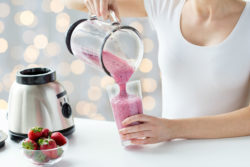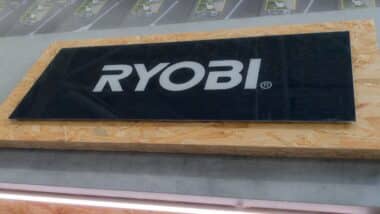 A class action investigation has been launched against certain blender manufacturing companies after customers reportedly found black flecks after using their Waring kitchen blender.
A class action investigation has been launched against certain blender manufacturing companies after customers reportedly found black flecks after using their Waring kitchen blender.
Customers claim they’ve found black flecks in food that they processed using a Waring kitchen blender. The Waring kitchen blender is part of the Waring Commercial appliance lines, with the company operating for over 80 years while selling cooking products to customers.
Waring is one of the leading manufacturers of kitchen appliances in the United States, with millions of consumers relying on the company to continuously maintain strict quality control of their products. However, some Waring kitchen blender models have been allegedly leaving black flecks in blended food, which was reported by several consumers.
“I DO see some very, very tiny black flecks upon running the clear water test … Apparently it is the same material used on Teflon pans. Not thrilled about this — please let me know if you can enlighten me about this. I plan to call Waring customer support to see what they have to say about it,” one customer reported.
Overview of Waring Kitchen Blender Black Flecks
The black flecks seem to result from the friction of the rotating blades, which rub against the seal beneath the blades. This seal is meant to keep blended food from leaking out of the blender, but it has been allegedly producing black flecks that can end up in consumers’ drinks or food.
Customers who own a Waring kitchen blender are currently being advised to do a white bowl test to test for black flecks:
- Pour two cups of clean water into white bowl (make sure the bowl is clean so there is not any outside debris)
- Pour the water into a clean blender
- Run the blender on high for 90 seconds
- Pour the water back into the white bowl
- Check for any black flecks that may have been produced
Warning kitchen blender customers have been reportedly discovering the black fleck problems when making blended foods or smoothies, while others reported this problems soon after buying the product.
“I really wanted to like this Blender considering this is one of the few companies that offer an alternative to toxic plastic containers. However, the ‘black flake’ issue is very REAL! I ran this blender through several tests (around 7 to 10 times) with plain water and black plastic flakes were everywhere … YUCK! It seems that the higher I ran the speeds and longer [sic] I ran the blender the more black flakes it produced,” another customer wrote.
This Waring kitchen blender investigation comes soon after Vitamix agreed to pay a class action settlement to resolve numerous claims of defective products, from consumers alleging the products had left tiny non food particles in blended food or drinks.
According to plaintiffs Vicki Linneman and Obadiah Ritchey, the Vitamix blenders tainted their food with tiny PTFE particles, which is a compound similar to Teflon. Similar to the Waring kitchen blender, the particles were allegedly produced by the blades rubbing against the seal.
Consumers who purchased a Waring kitchen blender may be able to file legal action against the manufacturing company.
Join a Free Waring Blender Class Action Lawsuit Investigation
If you own a Waring blender or a blender from another manufacturer and your blender deposits black flecks into the blended material, you may qualify to file a class action lawsuit.
ATTORNEY ADVERTISING
Top Class Actions is a Proud Member of the American Bar Association
LEGAL INFORMATION IS NOT LEGAL ADVICE
Top Class Actions Legal Statement
©2008 – 2025 Top Class Actions® LLC
Various Trademarks held by their respective owners
This website is not intended for viewing or usage by European Union citizens.














